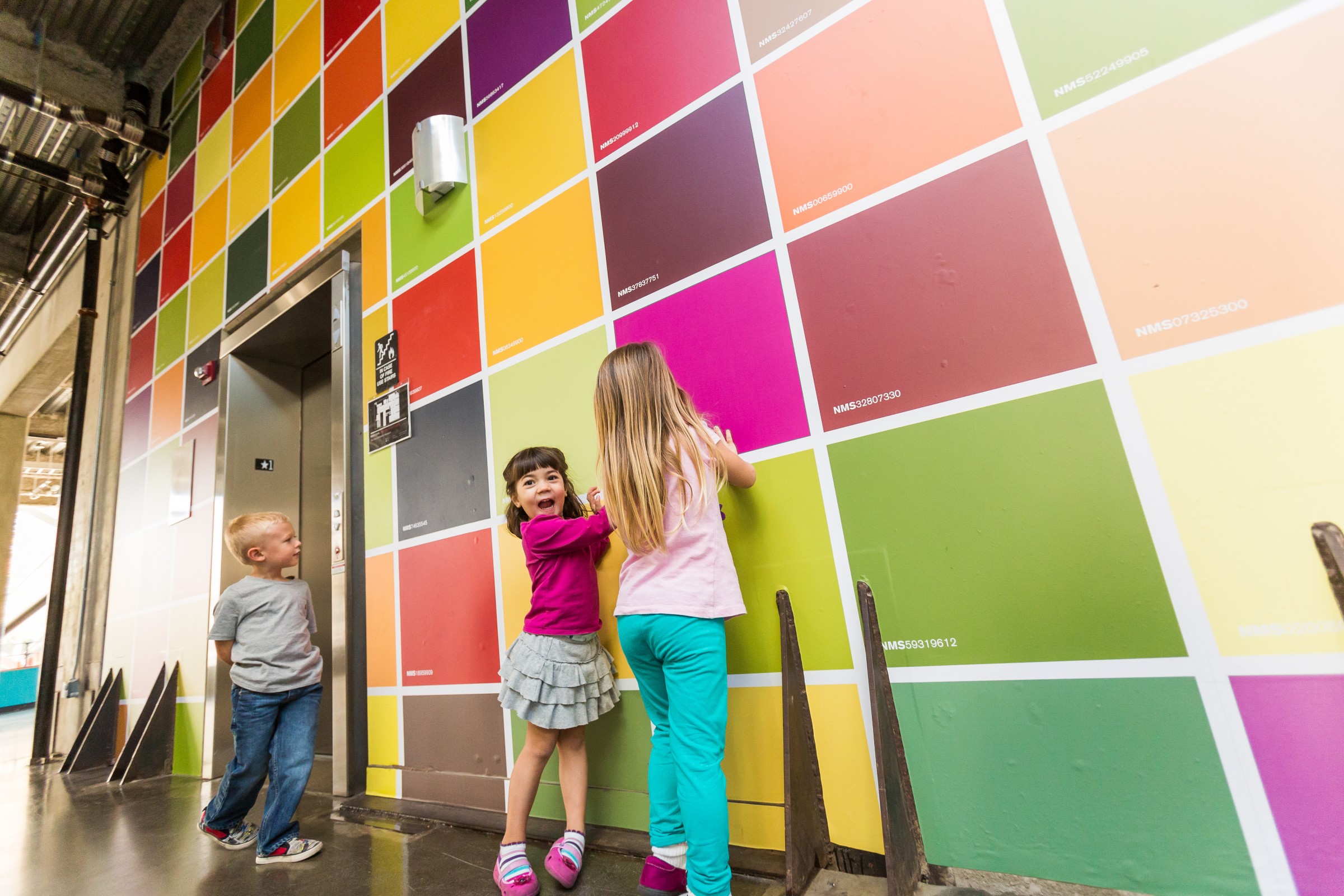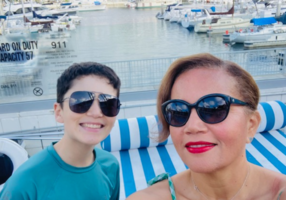Walk into the New Children's Museum Downtown, and you might be shocked to see old sheets and boxes on the floor. These items can be used by children to play in a variety of different ways perfect for open-ended play. I spoke to Megan Dickerson, Manager of Exhibition Development for the New Children's Museum about open-ended play and the key role it plays in child development.
COURTNEY DALY-PAVONE: How important is open-ended play for children?
MEGAN DICKERSON: I study playwork, a very open-ended way for adults to support kids in their playing. In playwork, we talk about play as behavior that is “freely chosen, intrinsically motivated and personally directed.” As an adult, you can think about it this way: what is the thing that you truly love to do? The thing that makes you feel in flow? That’s your play. So I would say that open-ended play is important for both kids and adults. The difference is that we, as adults, have control over our time. Kids don’t. As adults, we need to give kids the space and flexibility for whatever form their open-ended play takes. Basically: play is what makes us feel most alive in the world. Why wouldn’t we want our kids (and ourselves, for that matter) to have that?
Can kids learn from playing?
Humans are always learning— it’s what makes us such interesting creatures! Kids are no different. Kids are learning wherever they are. The thing is—children don’t always want to learn what we want to teach them at any given moment. In their play, kids learn about themselves, about other people and about what it means to be human in their world. Of course, there’s playful learning— for example, singing a song to help learn about a particular subject. But play is its own thing: perhaps in play, we learn what we want to learn when we are ready to learn it.
What are some examples of open-ended toys?
First, you need to rethink toys. Think instead about what kinds of things are “playable.” In that context, the cardboard box is a great toy! It can be a hat, or a house, or a robot from another planet. A stick is a great toy. Bubble wrap is a great toy. I really like the term “loose parts.” It doesn’t just mean that kids have lots of loose toys to play with. It really means that kids have the freedom to combine action figures and boxes and sheets and sticks in whatever way they choose to combine them. Imagine if you could only use a jump rope for jumping rope in the traditional sense. It’s not a very good loose part. But if you can use the jump rope as a snake, or as a tie-in for a fort, or as a boundary between your space and someone else’s space—well, then you suddenly have an open-ended toy.
So many kids are indoors on screens nowadays, do you have any tips for parents to get kids back into playing with toys and using their imagination?
I think it depends on the type of screen experience the kid is having. Something like Minecraft, for example, is a very layered play experience. Kids can move things around, socialize with others, and create their own worlds. It’s not unlike the old fort-building concept—it’s just digital. The big difference is that kids aren’t moving their bodies when they’re playing games like that, which has all kinds of other consequences for their health. If we want kids to play physically, the biggest advice I have for caregivers is that you first have to think about yourself and your attitudes. Are you worried that if your kids start playing, they’ll mess up the house? It’s a lot easier to “clean up” a video game. What are the subtle cues we are giving kids about their play—what’s appropriate and what’s not? A lot of times, it’s not the kids who have a “play deficit.” It’s us as adults who create that deficit by not allowing kids space and time to play freely.
The New Children's Museum has some current exhibits that encourage children to play with old clothes, and boxes can you explain why that is so important?
It’s one thing for a kid to play with dress-up clothes or build with boxes in his or her own living space or neighborhood. It’s another thing for that same kid to come to a place where he or she might do the same thing alongside kids from different walks of life. For me, play is how you create community. At our museum, kids play and create together in a space where, hopefully, they can all be equal. Adults can meet each other here, and learn that perhaps they have something in common with someone who is very different than them.
The Museum also has puppets and a tree house and many other areas where kids can just play and run. How do you develop, and create these installations? Do you always incorporate, play and imagination in everything that you do?
What makes The New Children’s Museum different from any other children’s museum in the world is our work with artists. Every “exhibit” at our museum is an installation artwork by a contemporary artist. Partnering with artists generates all kinds of installation ideas that are bigger and better than what we would come up with on our own. Another difference from our museum and other museums is that we don’t start with a topic of something we think kids should learn about, and then try to figure out ways to make it interesting to kids. Instead, we and the artists we commission to start with the playing child. What does the playing child need to be truly playful? Then we think about the supporting adult. What do caregivers need to feel comfortable in our space? And then we think of the broader community and what’s important to our city and region.

The New Children's Museum- 200 West Island Avenue San Diego, CA 92101 619-233-8792 https://thinkplaycreate.org/


